
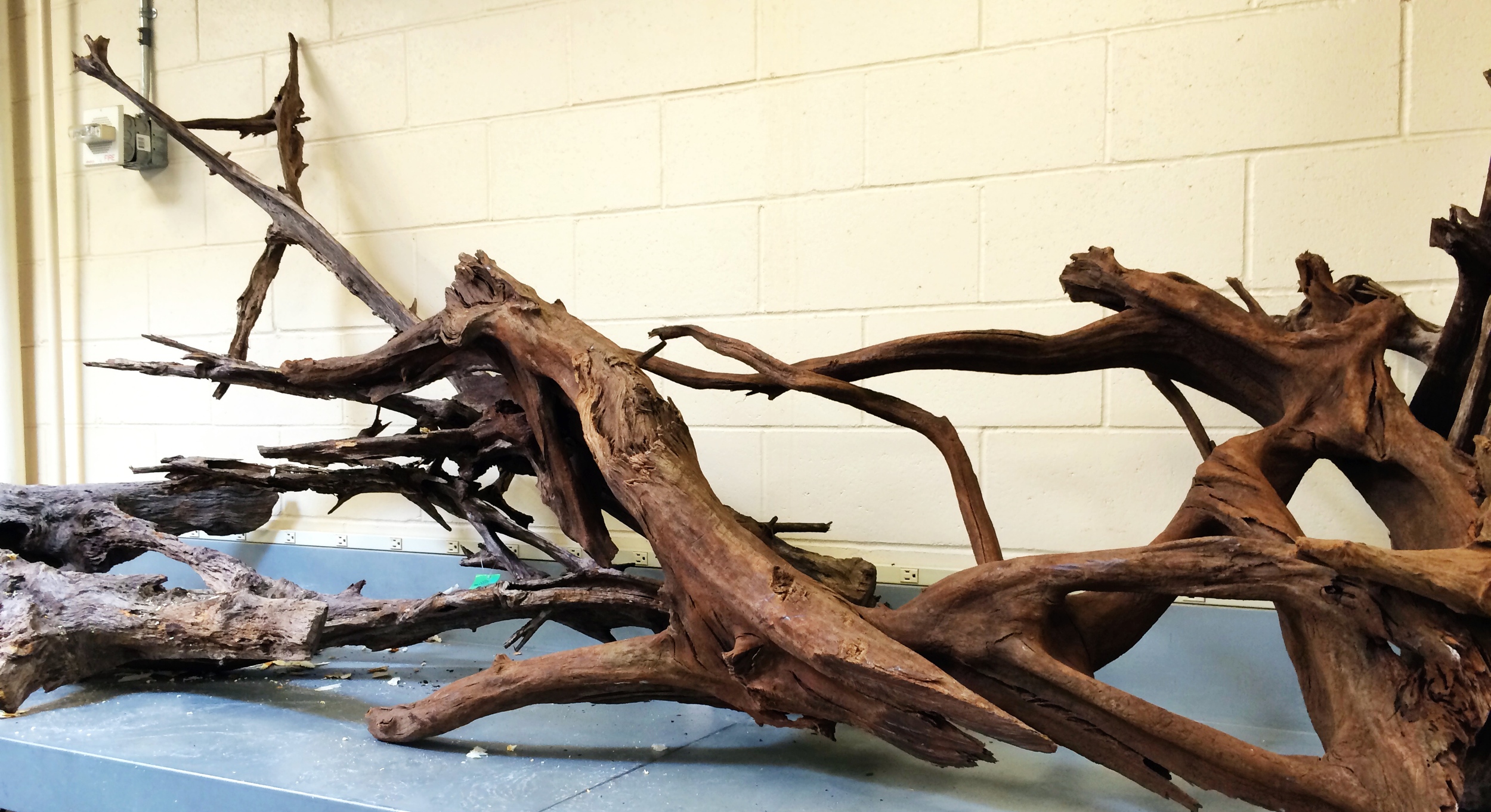
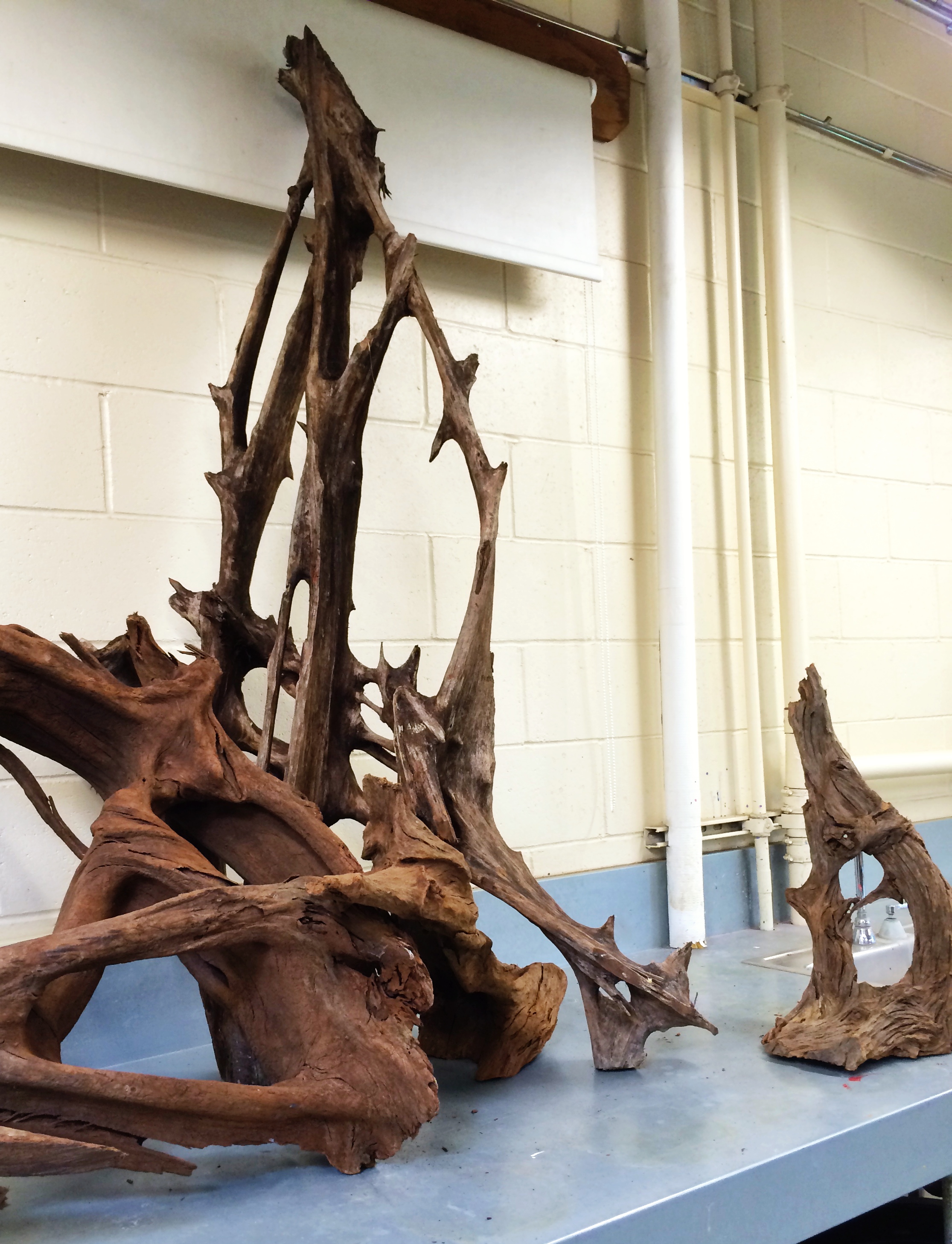
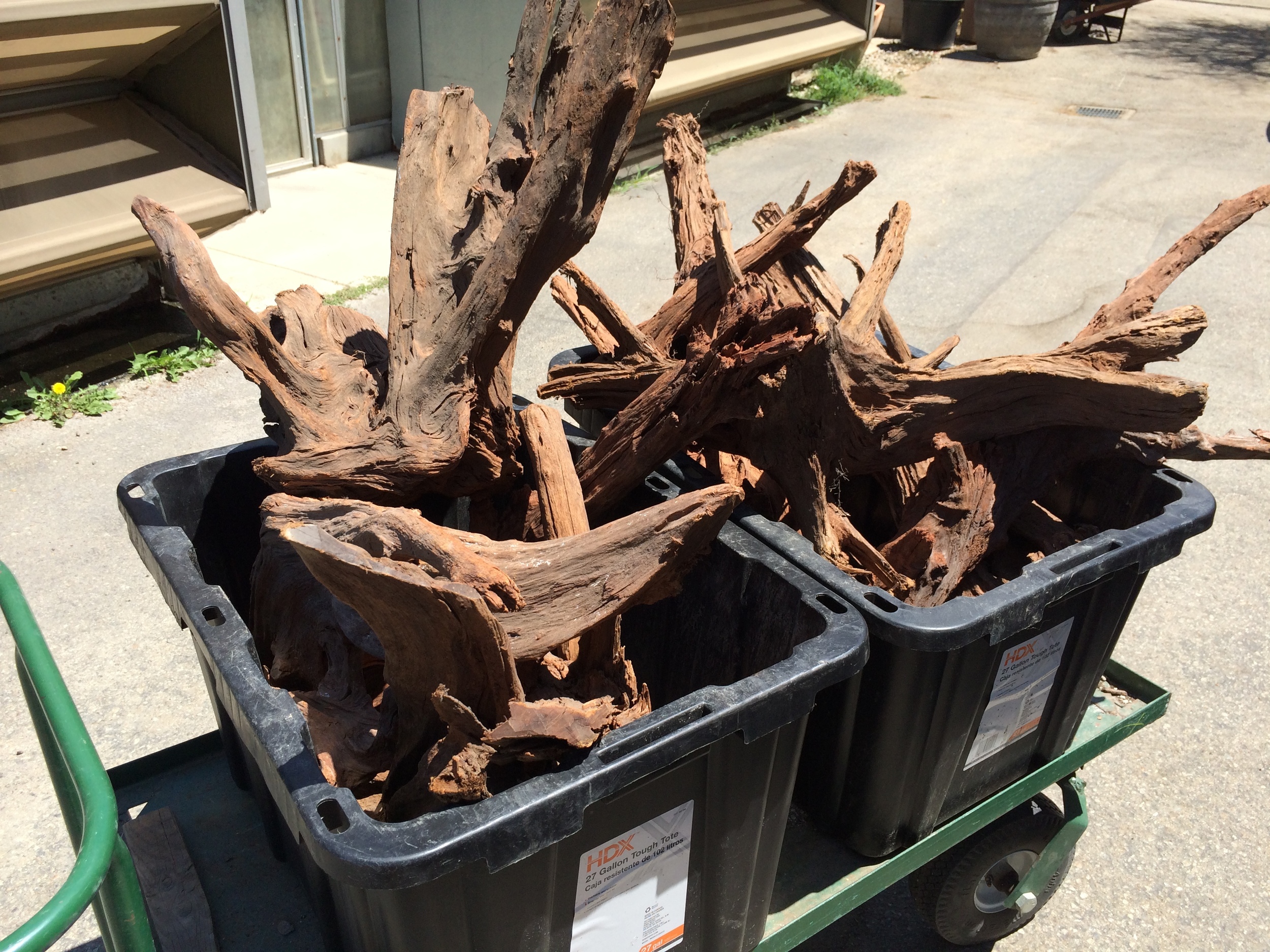

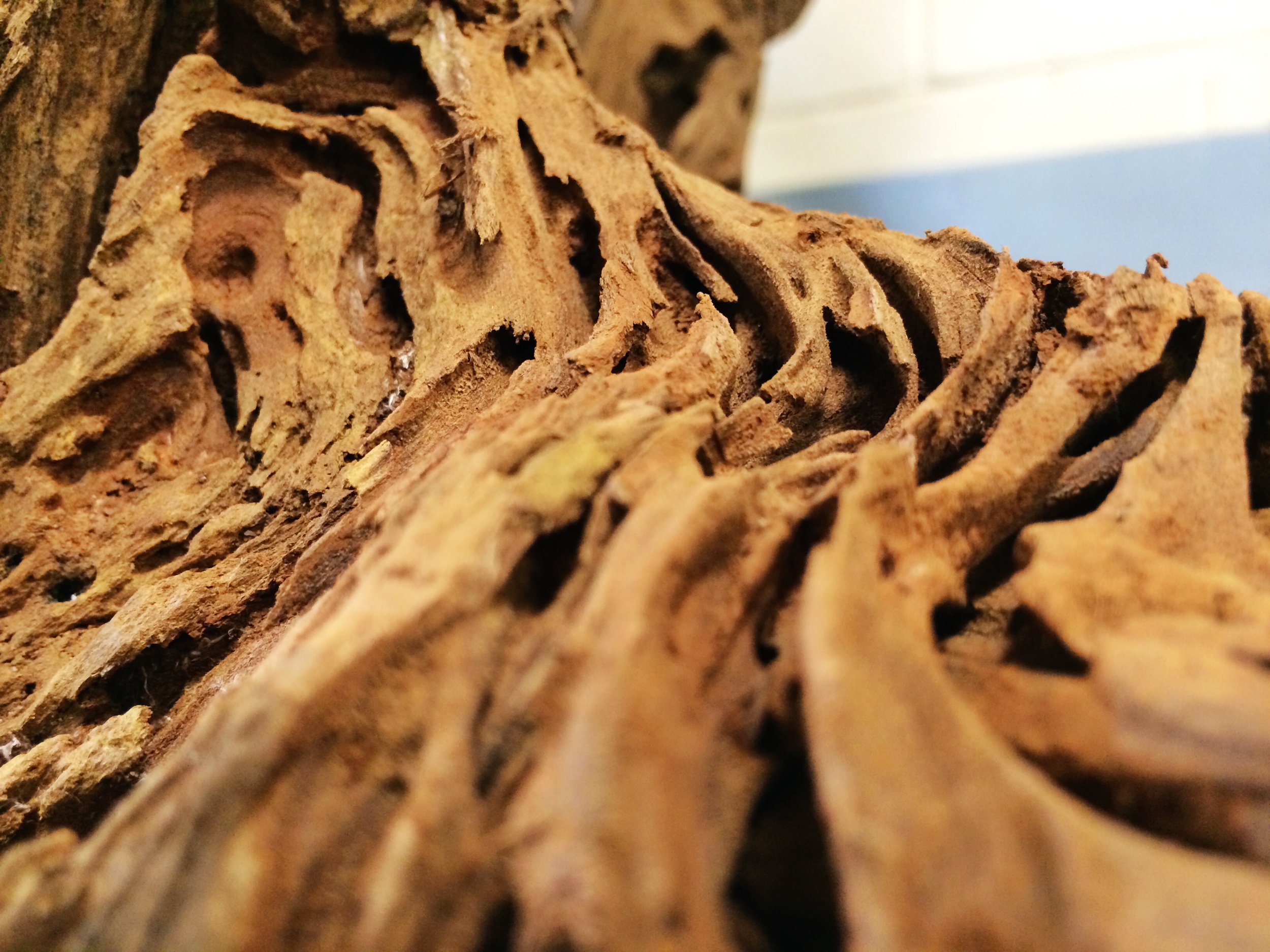
5000 Gallon Conservatory part 3: Sticks and stones
Now on to redesigning the interior of the pond. After months of planning, cleaning, filter installation and testing, we were ready for one of my favorite parts of any of my projects, the hardscape. The hardscape is the foundation for the aesthetic of the display interior. Of course, there are aquascapes that have little to no hardscape such as Dutch style layouts, but the direction for this project and the surrounding environment for which this pond resides, called for driftwood and river stones. Mimicking the bottom of a tropical river such as those found in South American or Southeast Asia was the goal. This wasn't a biotope by any means, but a medium for any tropical rainforest environment.
Due to the large volume and depth of the pond, sourcing driftwood appropriate for a tropical environment was difficult. Finding driftwood that would be proportional to the display was key to creating the aesthetic I was envisioning. The initial direction was to incorporate feux trees fabricated from different composites, either fiberglass or concrete. But after weeks of going back and forth we decided to go with large driftwood pieces sourced from Malaysia, which made for a more natural and real-life look. I needed to find pieces that were at least 6 to 7 feet long since the depth of the pond was already 6 feet. Of course long pieces would be preferred but I felt we could make due with what we already sourced.

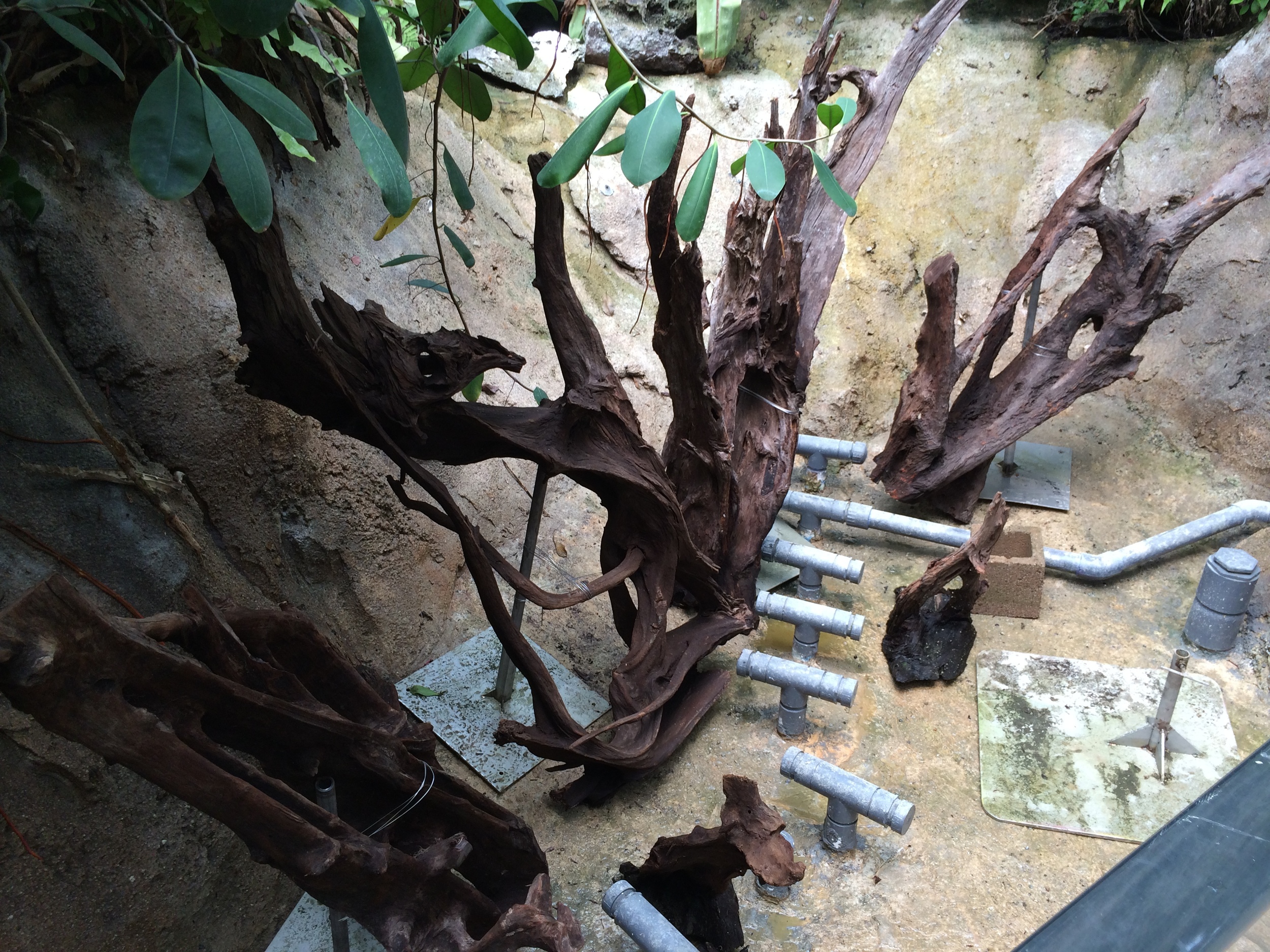
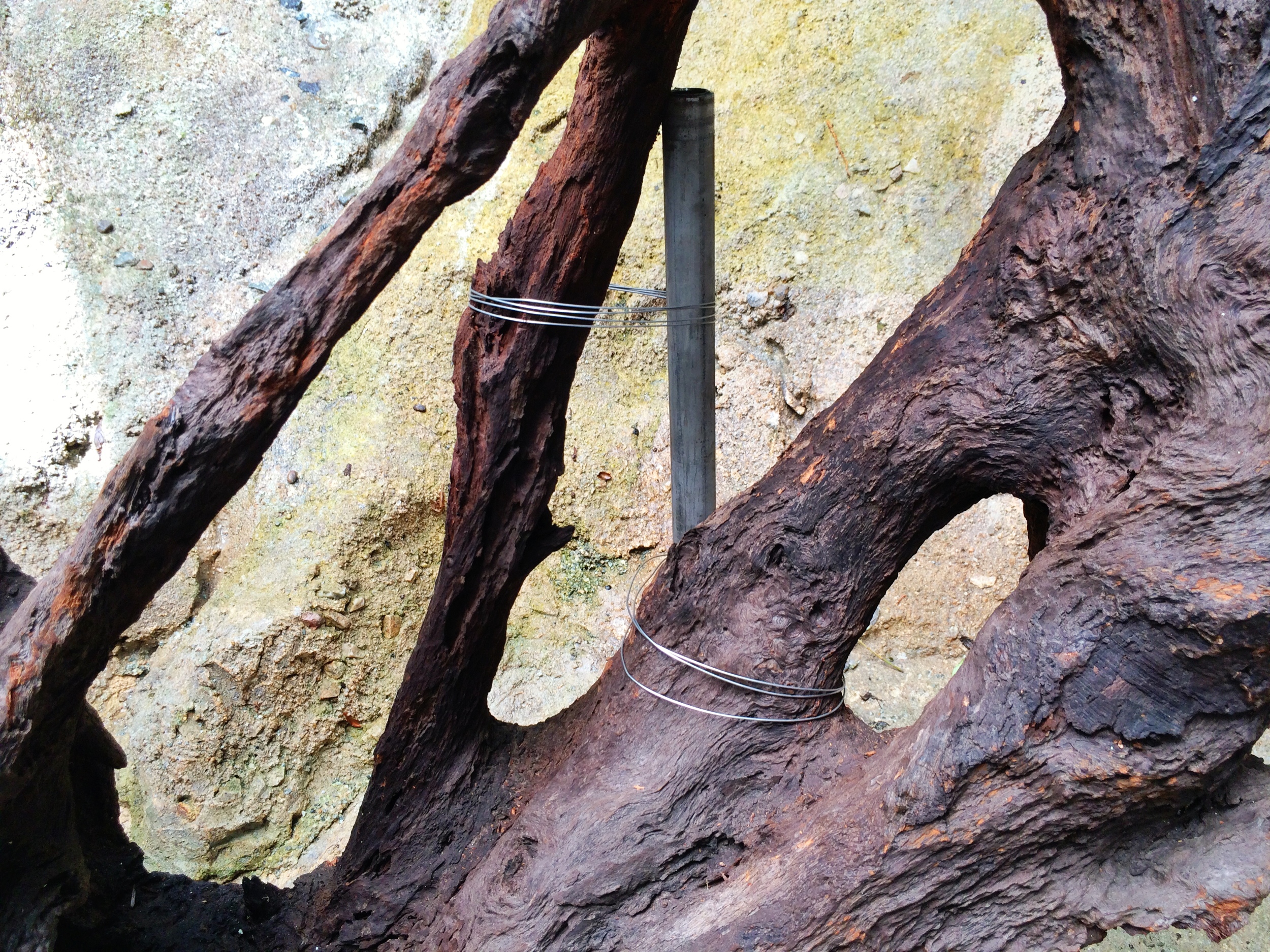

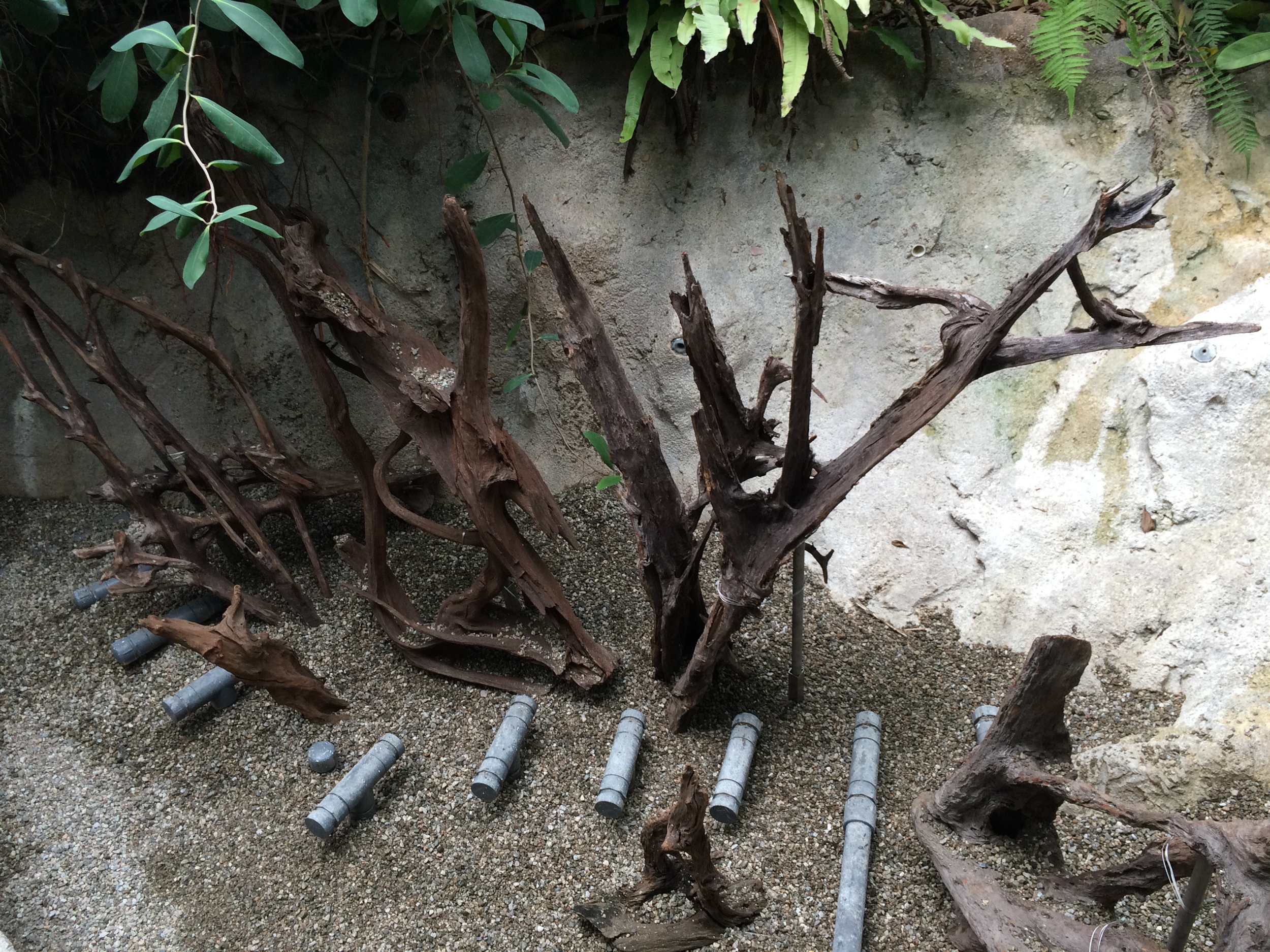
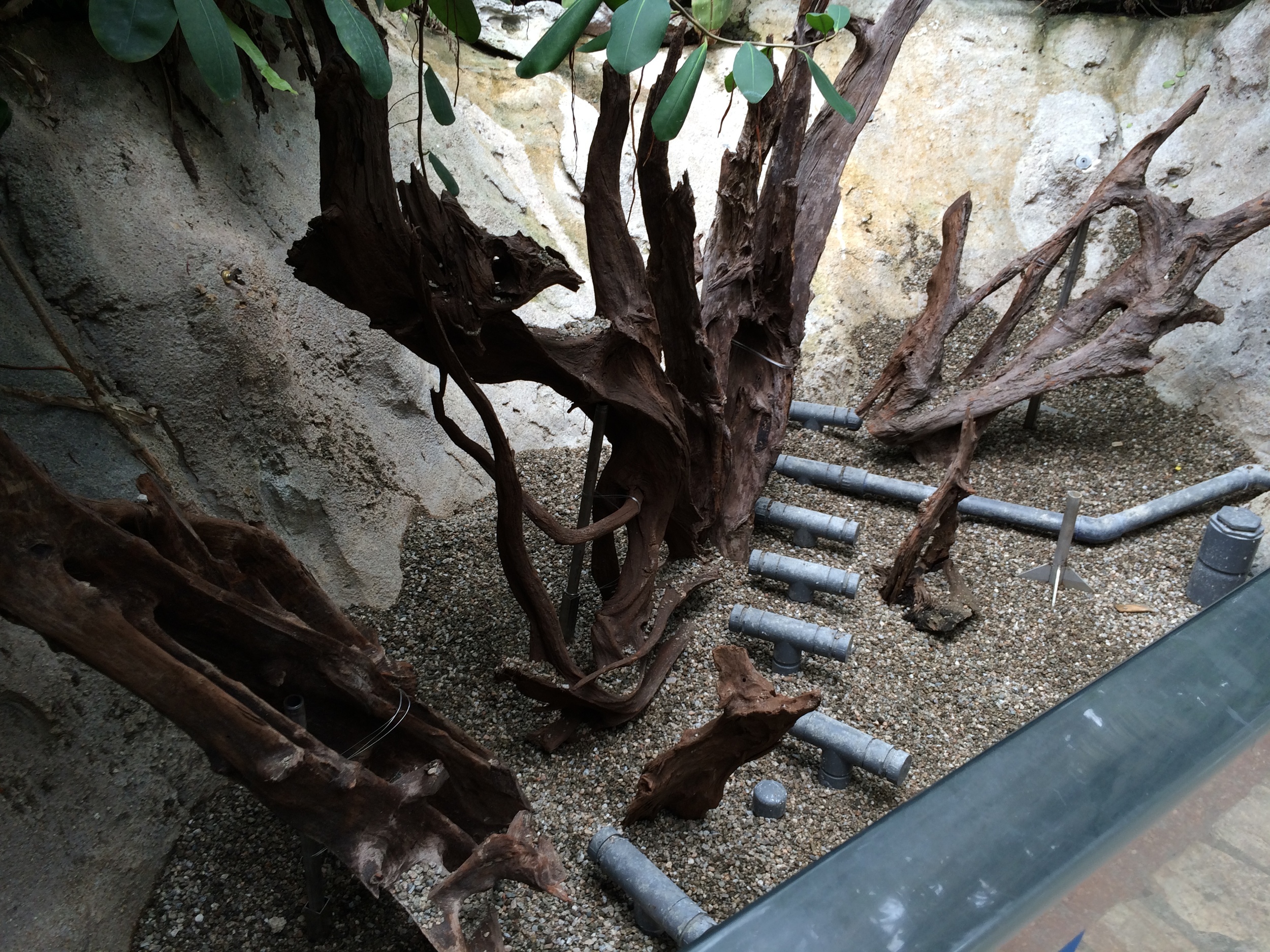
How was I supposed to go about arranging the driftwood? There were some options I was going back back and forth from, one of which was mounting these pieces to two-by-fours or even to other pieces of driftwood, but getting each piece in the exact position would be difficult, and attaching them would pose an even more difficult feat. We went with stainless steel plates with rods instead to be used as support stands. Even with the stands, I was still able to make adjustments as needed and then stainless steel wire was used to secure everything together. The stands actually worked out well since the large surface area of the plates anchor themselves once the substrate and stones were set in place.
Once the larger pieces were set in place, the aesthetic soon come together with the smaller pieces of wood and rock. The idea was to arrange the wood where the display looks natural but yet aesthetically pleasing to the eye. This is where the rules of thirds is implemented. But due to the odd shape of the pond, the rule of thirds was broken down to clusters of wood and rock, along with the layout overall.
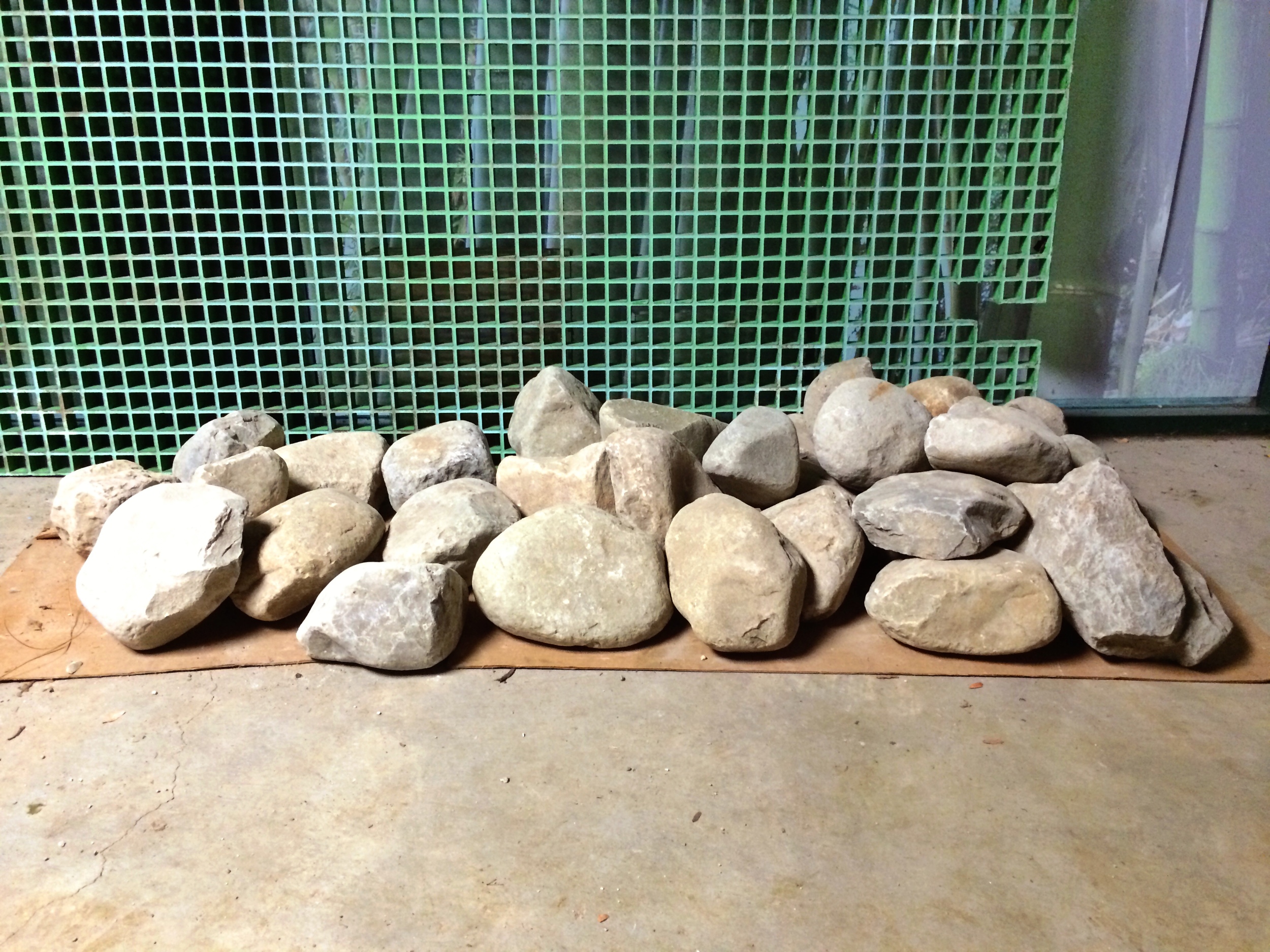
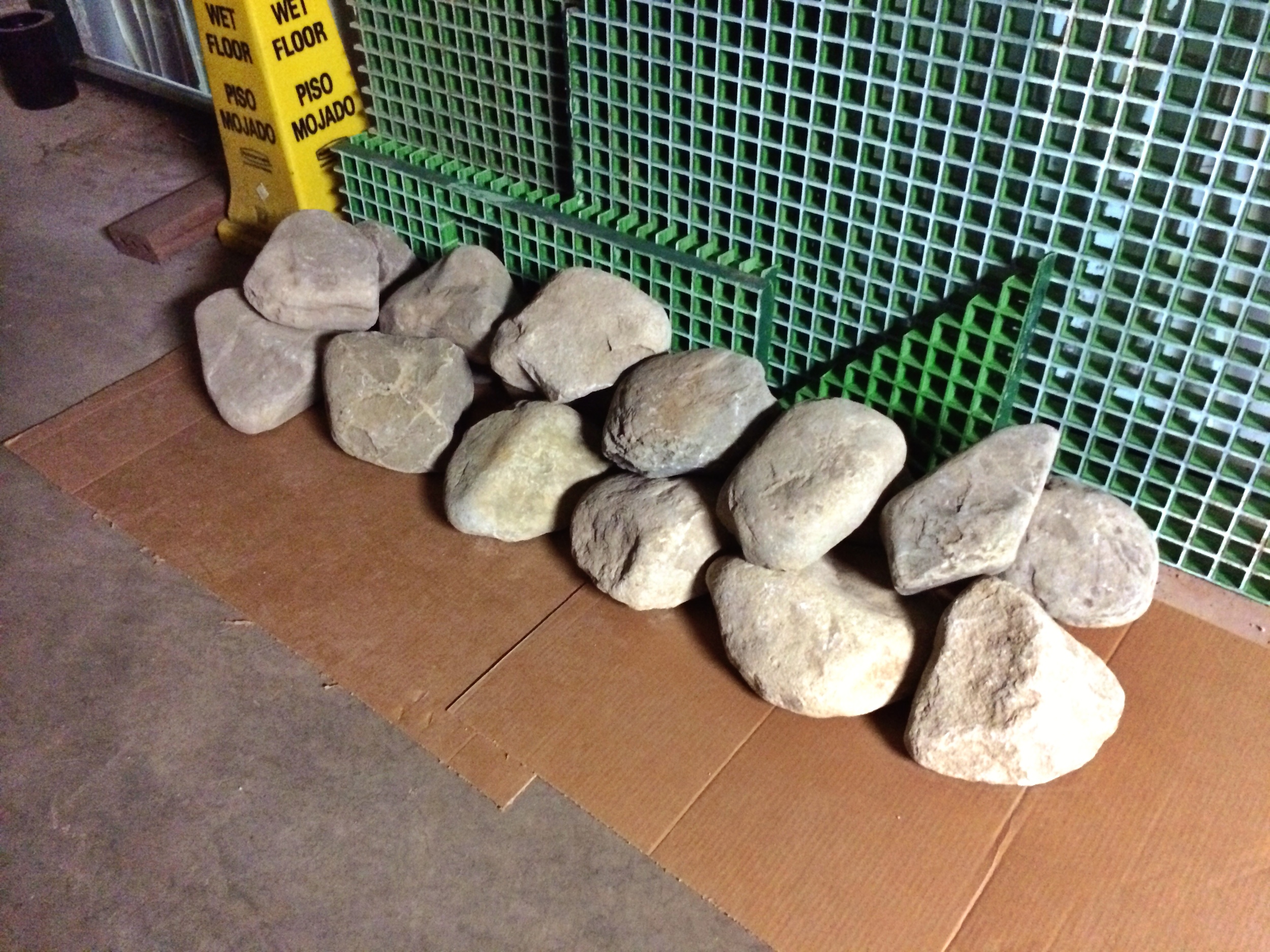
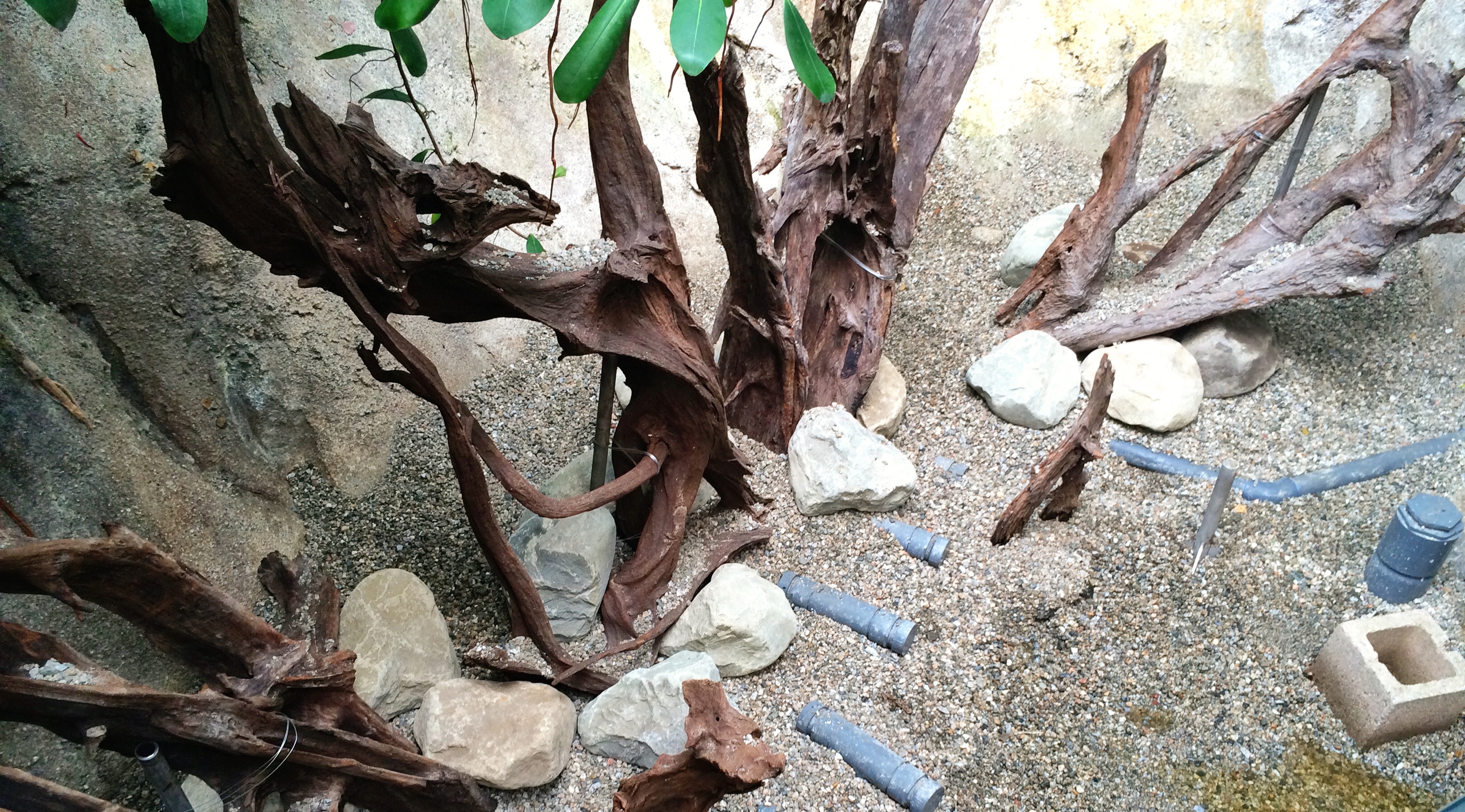
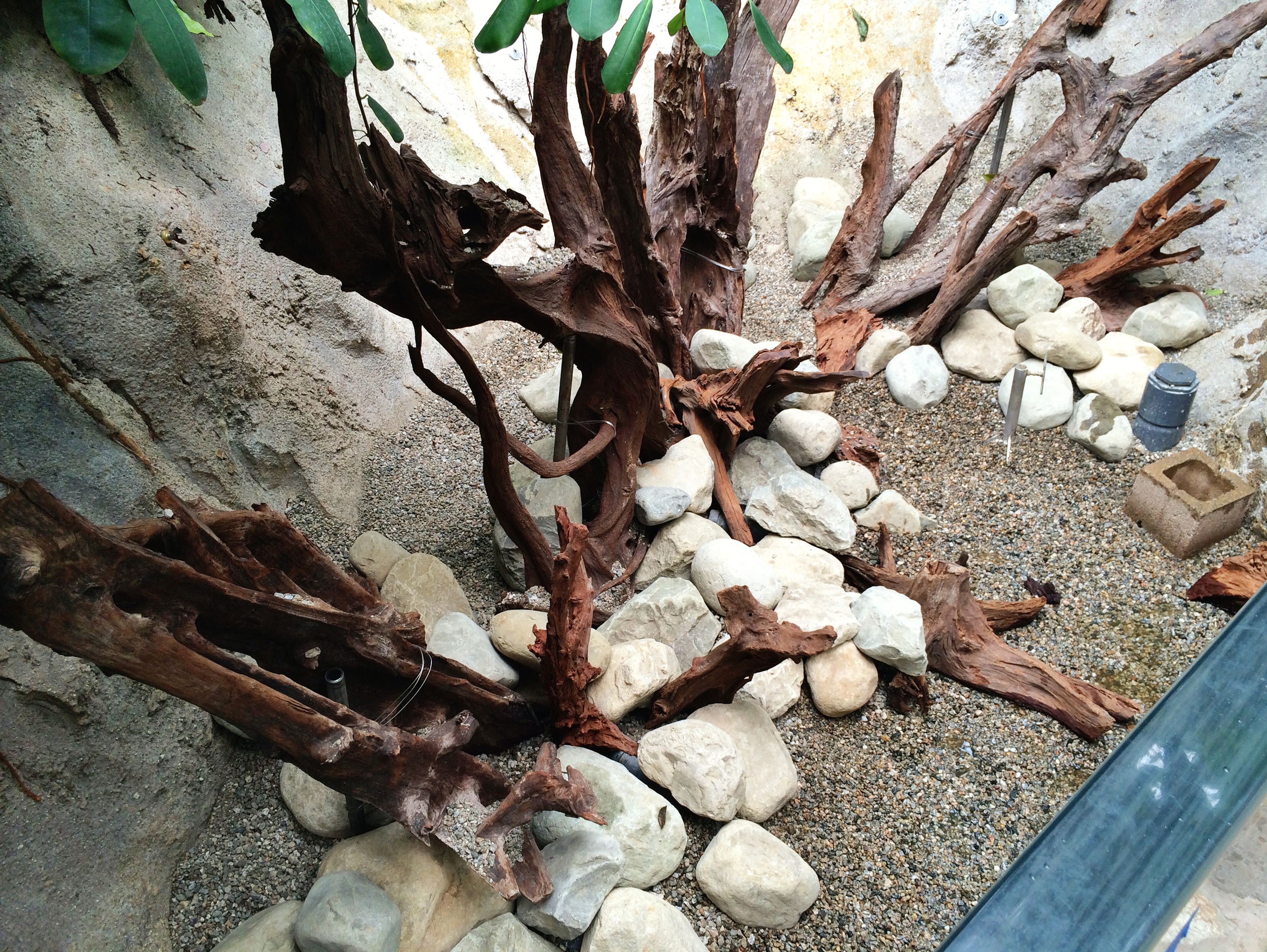
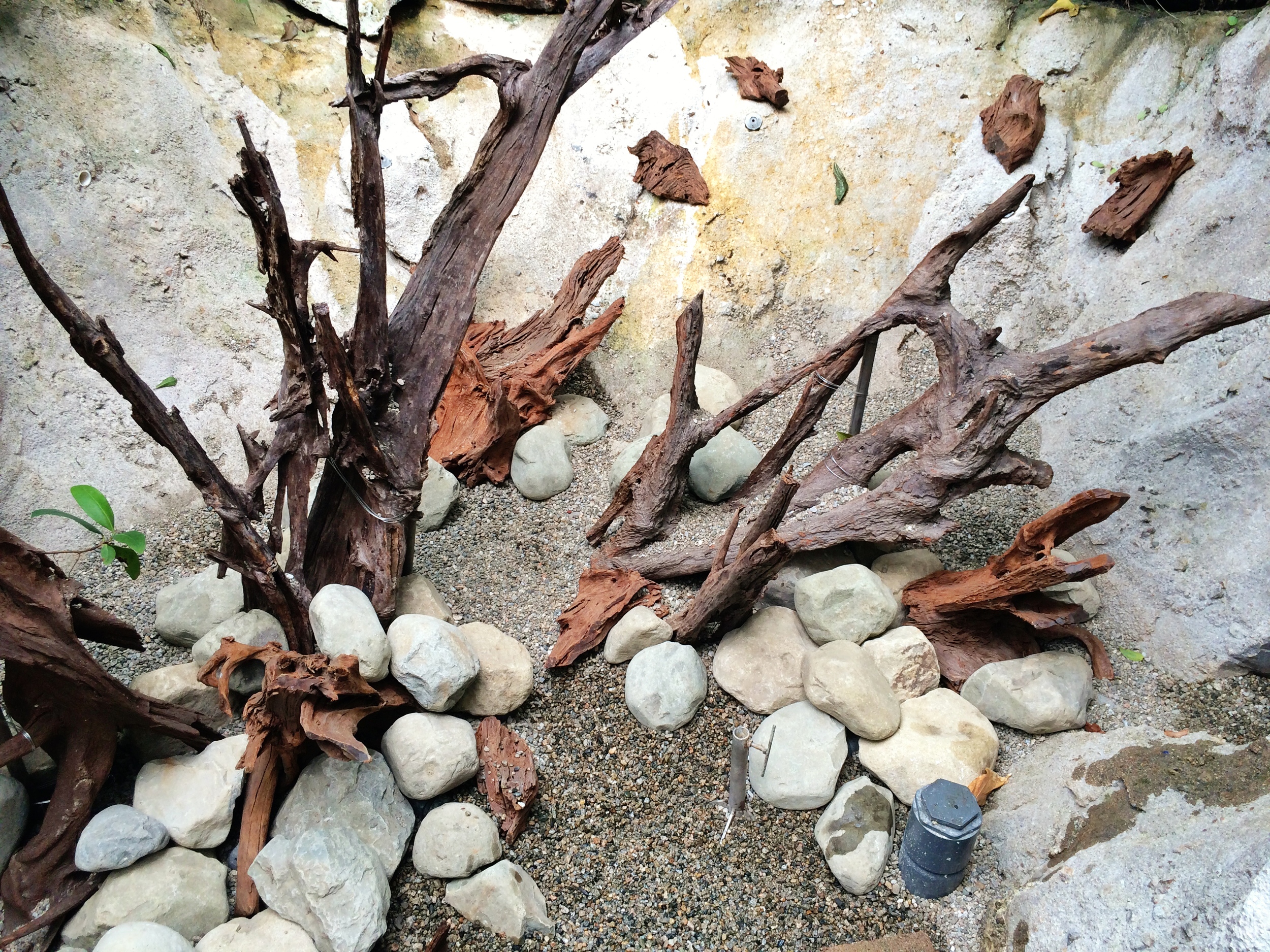
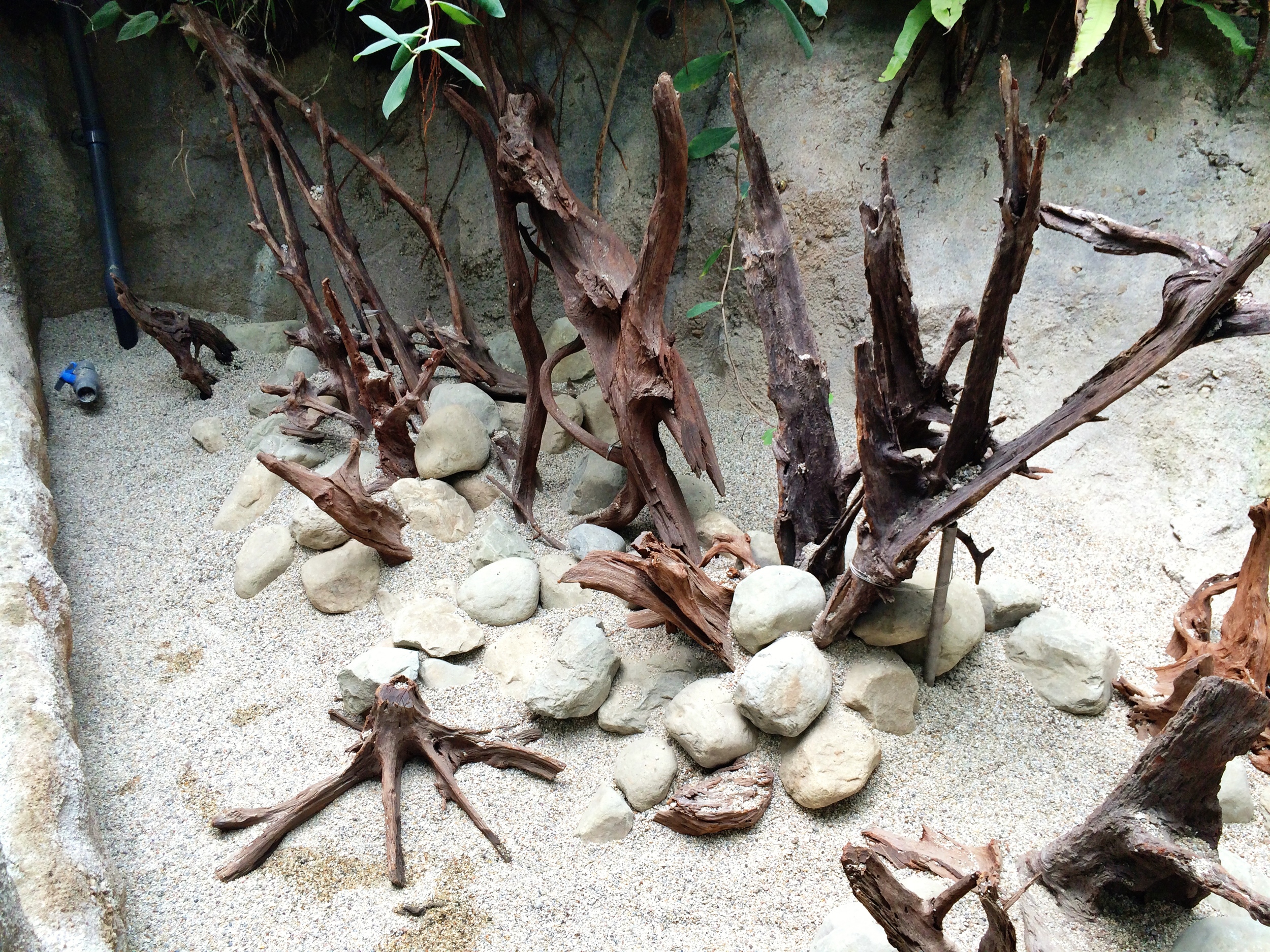
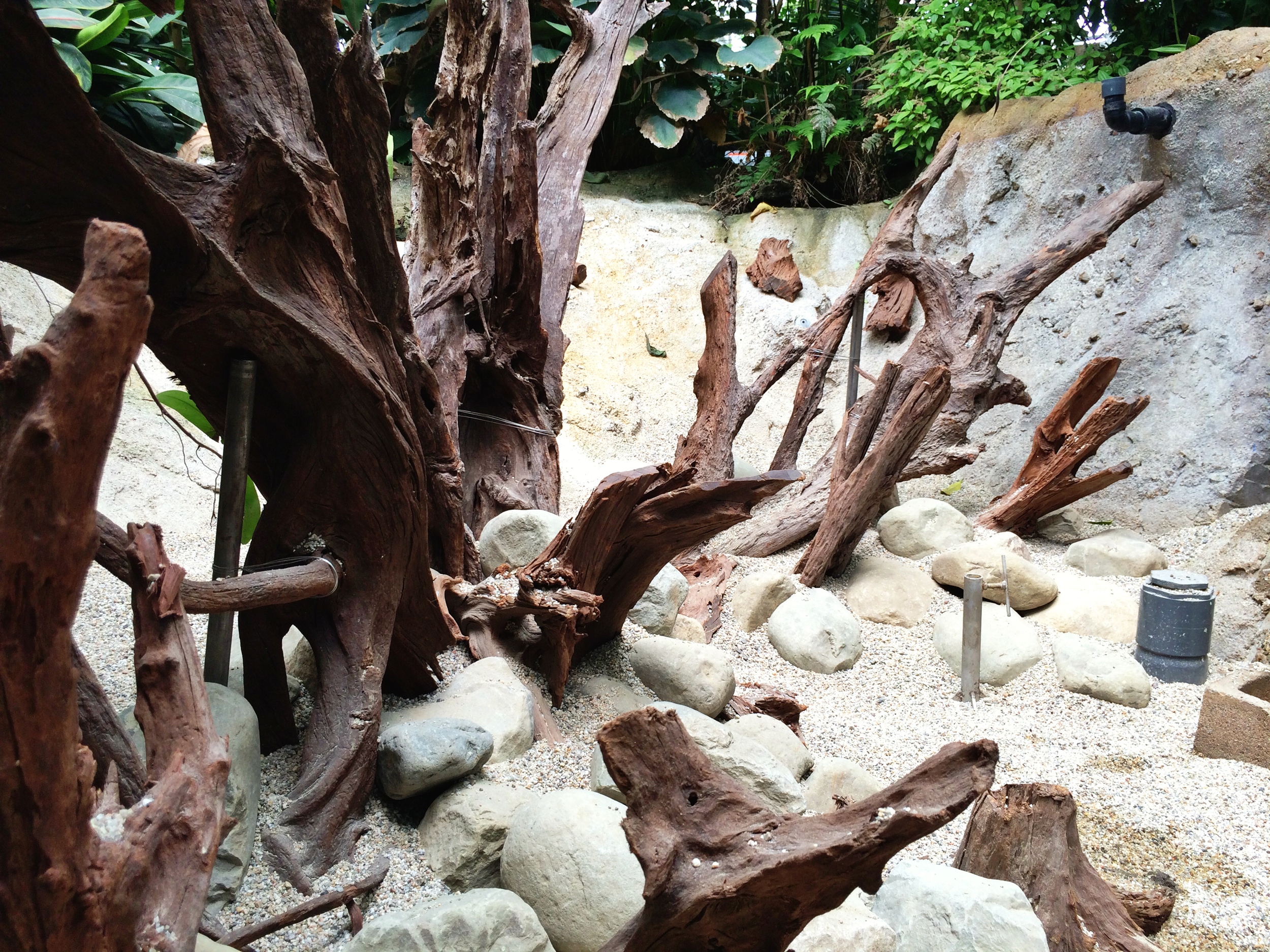
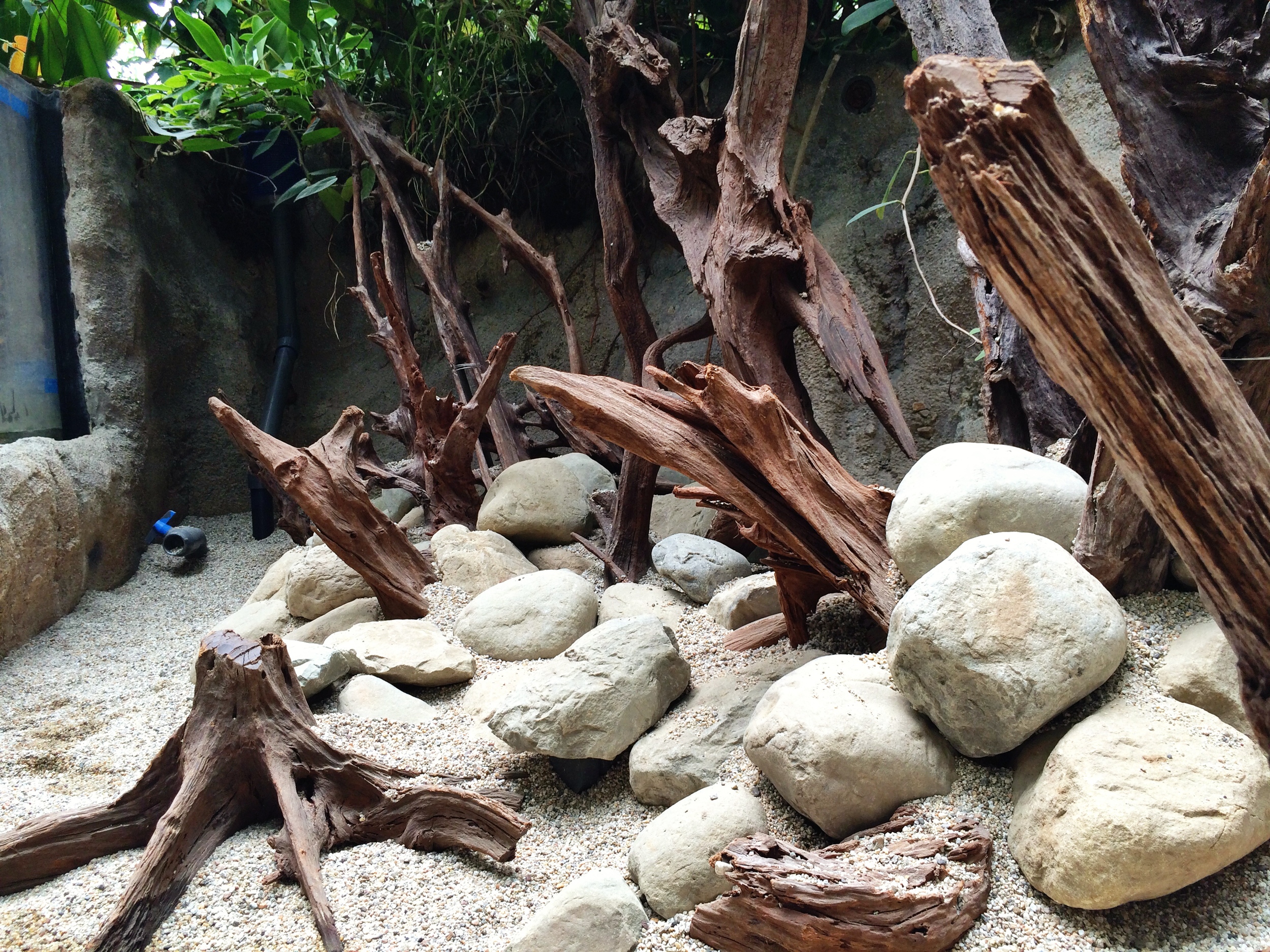
The substrate from the previous setup was removed earlier on and cleaned before being reintroduced. Then a combination of river stones were used, and the same rule applied where the largest stones were placed first. The large stones served a couple purposes, one was to provide extra support for the driftwood, and the other was to emphasize the foundation of the hardscape along with the large pieces of driftwood. Then came the medium and small pieces of wood and stone, which helped tie together the final layout of the display.
More substrate was added at the very end to give a more natural look overall. The substrate was also sloped upwards from the front of the pond towards the back, this helped create a sense of depth as you view the pond from the plexiglass.

